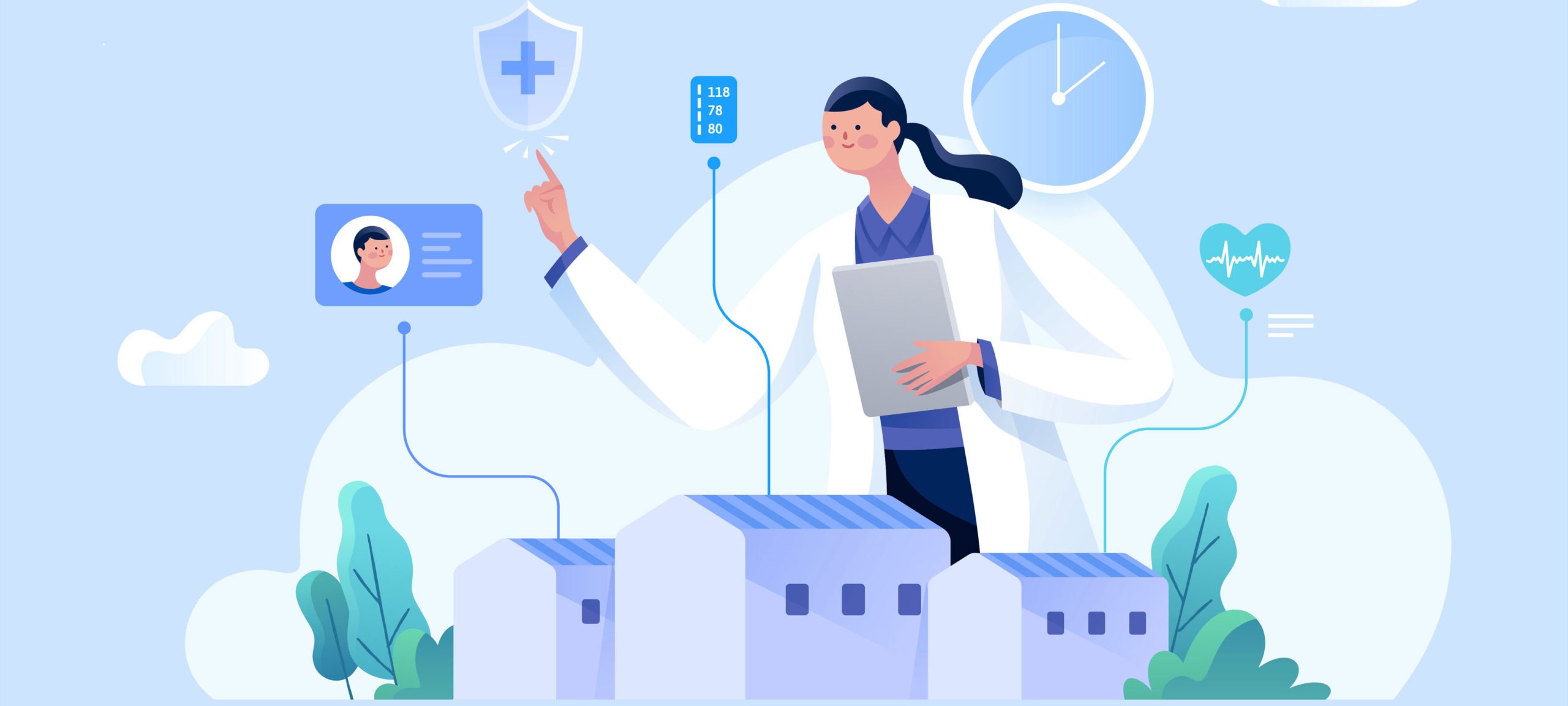Effective disease management, especially for chronic conditions, is multi-disciplinary, incorporating medication as well as lifestyle management.
As the world’s biggest spender on healthcare, U.S. expenditure on chronic diseases is high. While globally, chronic diseases make up 57% of total healthcare spend ($12 trillion), in the U.S., they make up 87% of total healthcare spend ($3.9 trillion).
Despite this spending, chronic disease management is challenging, and the burden falls heavily on patients. Often, their efforts fall short. Patients with conditions such as diabetes and mental illness face a lifetime journey. They are required to make significant changes to their daily habits and comply with medication prescriptions. Moreover, as their condition evolves, adjustments need to be made to both medication and behavior.
For patients, the goal is to live as “normal” a life as possible. This can translate into unfilled prescriptions, missed or incorrect medication doses, delayed appointments, and sometimes,
a pause or stop in treatment.
For providers, the goal is to ensure progress against clinical goals, such as HbA1c in patients with type 2 diabetes. According to the American Diabetes Association, clinical practice guidelines “are key to improving population health; however, for optimal outcomes, diabetes care must be individualized for each patient.” This requires providers to regularly touch base with patients, measure vitals, and translate findings into actionable recommendations.
This tension between patient and provider goals reflects the challenges that stand between achieving health outcomes in the real world versus those realized in clinical trials. With much of the day-to-day responsibility of disease management falling on patients and their caregivers, intermittent interventions limit the ability of healthcare providers to optimize treatment.
Both patients and providers need healthcare solutions that support therapy optimization, alongside patient self-management and adherence. How do we provide care that empowers patients and facilitates treatment decisions?
The Evolution of Patient Support and Technology
Pharmaceutical companies have long invested in programs to support patient access and outcomes. To date, these activities have emphasized financial and benefit assistance, getting started and adapting to medicine, as well as providing disease education and lifestyle tips. Content and tools in the form of brochures, copay cards, emails, and links to web-based resources with generalized information are distributed to patients, often via their providers.
While this kind of education and support is valuable for relieving financial strains and addressing therapy initiation challenges on patients and their caregivers, the disease burden remains high. Patients need more help with self-care, monitoring, and progress tracking, particularly when it comes to day-to-day habits. They need practical tools that provide motivation, support accountability, deliver alerts about provider visits, and communicate assurance when they are on the right track. They also need support at the different stages of their disease journey including timely information on how to manage acute events, side effects, and what to expect in terms of disease progression.
Making monitoring easier and more convenient is key to unlocking better outcomes. Progress tracking and data collection help not just patients, but healthcare providers as well, enabling them to intervene when needed to adjust and optimize therapy. It provides greater clarity on how the combination of medicine and lifestyle can help with chronic disease management. More personalized education and precise care can lead to a reduction in hospital admissions and lengths of stay, greater patient satisfaction, and ultimately, improved health outcomes.
To date, however, progress tracking and monitoring needs have been filled by the offerings of medtech and tech companies and are typically not integrated as part of patient support programs delivered by pharmaceutical manufacturers. In the diabetes space, Dexcom, Abbott, and Roche have expanded and improved their offerings in continuous glucose monitoring. More broadly, the big five tech companies (Apple, Amazon, Google, Facebook, and Microsoft), enabled by their ubiquity, are empowering consumers, especially patients with chronic diseases, with greater awareness and access to individual health data and information. In addition, the substantial reduction in the cost and size of sensors (i.e., heart monitors, blood oxygen monitors, glucose monitors) and their integration in multifunctional wearables (i.e., Apple Watch, Fitbit, Amazfit, Samsung Galaxy Watch) is bringing monitoring to the masses.
Data collection and monitoring, especially through mobile devices, have the power to enhance the patient experience as well as improve healthcare delivery. An analysis of mobile health (mHealth) investment and adoption demonstrates how the sector is heating up (see The mHealth Opportunity). In fact, 84% of all mHealth investment (totaling $35 billion) is in chronic disease, 75% of which ($26 billion) is in four areas: diabetes, obesity, cardiovascular, and central nervous system diseases.
Within mHealth, digital wellness apps and wearables focused on fitness, lifestyle management, and women’s reproductive health, have received a lot of attention. However, progress tracking through wellness apps focused on fitness, diet, and lifestyle management has relatively limited therapeutic value, particularly when it comes to goals such as HbA1c for patients with diabetes. Moreover, consumer and patient use have slowed, reflecting the challenge in making lifestyle and behavior change stick.
On the other hand, remote patient monitoring solutions that integrate high-quality software programs with wearable monitoring devices hold promise. While more difficult to develop given regulatory and clinical requirements, these solutions provide measurable value for both patients and providers.
These technological developments, while exciting, set up a potential culture clash. Healthcare, specifically the pharmaceutical industry, is conservative, dominated by compliance and regulation. The tech industry innovates and changes quickly.
As technology continues its steady march into healthcare and is adopted by patients and providers, how will care delivery change?
The Evolution of Care Delivery and Achieving Real-World Outcomes
One of the biggest challenges faced by pharmaceutical companies in their relationships with healthcare providers is addressing the gap between randomized clinical trials and real-world outcomes. This can be achieved through healthcare delivery that incorporates patient and provider interactions with technology and patient support.
Healthcare delivery has been undergoing a process of consumerization, including moving into different settings. Hospitals are becoming more ancillary, while ambulatory centers, urgent care centers, minute clinics, and mobile care are increasingly part of the mix.
With the COVID-19 pandemic, virtual and remote care has emerged as a potentially transformative delivery channel, providing access and convenience to patients, and cost-effectiveness to the system. Incorporating technology with remote care will support data collection and analysis, enable better connectivity between patients and healthcare providers, and facilitate timely feedback from clinical teams.
The shift in healthcare delivery from an office-centered, episodic visit model, to a real-time trigger and response model, will provide a better understanding of the role and effectiveness of pharmacology in treatment.
Let’s take diabetes as an example. Within the type 2 diabetes population, significant improvements in patient outcomes have been observed where devices, apps, and web portals are used to measure, log, and monitor vitals and biometric data (weight, BMI, blood pressure, blood glucose) on a regular basis. The collected data is then used to deliver coaching, either in an automated form (via artificial intelligence solutions) or through nurse interaction.
One of the largest studies to date, published in JAMA in February 2020, and including more than 100,000 patients, demonstrated how a combination of apps and web portals significantly improves glycemic control through increased prescription adherence. In fact, digital access led to higher adherence to oral diabetes medicines and lower Hba1c.
Interestingly, this data was collected between 2015 and 2017, when apps were more rudimentary, devices were less functional and more expensive, virtual diabetes programs (delivered via telemedicine) were rare, and artificial intelligence was in its early days.
As therapeutic solutions, pharmaceutical and medtech offerings sit at the center of this change, and therefore, have an important role to play.
Conclusion
Chronic disease support and care will emerge through a combination of pharmaceutical manufacturers accelerating the shift to digital and tech companies driving innovation in devices, connectivity, and applications.
Technology will deliver an easier, faster, high-touch experience for patients, and enable connectivity with healthcare providers addressing the care burden, especially for those with chronic diseases. It will also help bridge the gap between real-world and clinical trial outcomes and ultimately lead to lower costs.
Partnerships between pharmaceutical and medtech companies are key to elevating healthcare delivery in the age of technology.









